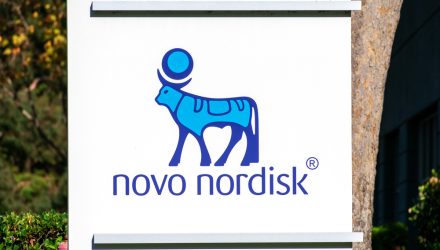Novo Nordisk nearly doubled its free cash flow in 2022 from 2021. The Danish pharmaceutical company announced at the beginning of the month that its free cash flow last year was 57.4 billion Danish kroner ($8.37 billion), compared to 29.3 billion Danish kroner in 2021.
This free cash flow supported “the strategic aspiration to deliver attractive capital allocation to shareholders,” Novo Nordisk CFO Karsten Munk Knudsen said during the company’s earnings call.
“In 2022, we returned more than 49 billion Danish kroner to shareholders via dividends and share buybacks,” Knudsen added. “Novo Nordisk has consistently returned its free cash flow to investors through both share buybacks and dividends.”
For 2023, the firm’s free cash flow is now expected to be between 60 billion and 68 billion Danish kroner, “reflecting the sales growth and investments in capital expenditure,” according to the firm’s CFO.
Free cash flow is the sum of net cash provided by operating activities and net cash flow used in investing activities. This measure is useful when evaluating cash available for financing activities, including shareholder distributions, after investment in the business. It is also a far better way to measure long-term profitability than GAAP earnings, according to investment manager FCF Advisors.
“At FCF Advisors we offer a unique way to gauge quality investment,” said Vince (Qijun) Chen, director of research and portfolio manager at FCF Advisors. “We measure profitability with free cash flow instead of earnings, which is subject to manager discretion.”
FCF Advisors specializes in free cash flow investment strategies, primarily through its Free Cash Flow Quality Model (FCFQM), a multi-factor model featuring a combination of quality measures informed by the firm’s research.
Novo Nordisk is currently the top holding in the FCF International Quality ETF (TTAI), which aims to outperform the MSCI All Country World Index excluding the U.S. through an active investment process. A quant model is used to rank stocks based on proprietary measures of free cash flow. Roughly 140 of the highest-ranked stocks are selected and then weighted on a modified market-cap basis.
The fund’s portfolio is also rated with an ESG score, excluding companies with low ESG ratings. Firms with an extreme rise in share count and increase in leverage are also excluded.
“Over the last several quarters, the market has been demanding profitability, and we’ve been measuring profitability through free cash flow,” said Bob Shea, CIO of FCF Advisors. “Free cash flow has never been more important.”
TTAI carries an expense ratio of 0.59%.
For more news, information, and analysis, visit the Free Cash Flow Channel.

